Umbria
Toscana
Piemonte
Chianti
Lombardy
Sicily
And many more!
Umbria
Toscana
Piemonte
Chianti
Lombardy
Sicily
And many more!
Tour Sonoma County
Coming Soon
Sonoma Vineyard
The scenery of Sonoma County is nothing short of spectacular in its diversity. Whether you start with the dramatic cliffs overlooking the Pacific, the tranquil view of the sea lions lounging on the beach where the Russian River meets the ocean, an unforgettable drive through a redwood forest or the rolling dairy country on the outskirts of Petaluma, you feel constantly transported to a succession of different countries.
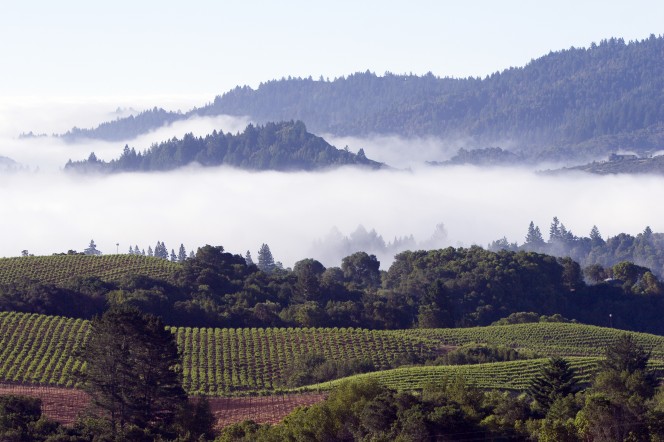
Sonoma Fog Covered Valley
Comprising more than 200,000 acres of varied terrain between the Pacific Ocean and the Mayacamas Mountains, Northern California's Sonoma County is a region as renowned for its sheer size as for its remarkable diversity.
Sonoma County is truly one of the world’s premier spots for growing and making great wines of all types, thanks to its ideal climate and varied terroirs. But it’s the environment that surrounds those growing conditions that also sets Sonoma County apart — the natural beauty, ranging from coast to redwoods to mountains; the history and heritage; the agricultural diversity leading to a bounty of locally grown foods. Most of all, it’s the people — a true community of growers, winemakers, and friends whose artisan passion makes Sonoma a place like no other.
Sonoma County is blessed with an ideal long growing season, with sunny days and almost no rain from May through September. Summer average high temperatures range from the 70s to the low 90s — ideal for ripening grapes—but even in the warmer inland regions of Alexander Valley and Knights Valley, cool evening temperatures in the 40s and low 50s preserve the wines’ acidity and balance.
The Wine Regions of Oregon and Washington....
Coming Soon
With it's cooling Pacific breezes and ideal hilly and mountainous landscapes, Oregon and Washington have long been associated with outstanding wine.
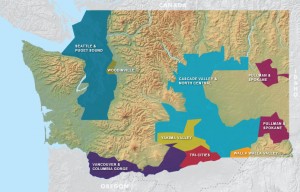
Washington State Wine Regions
Washington State is a premium wine producing region located in the northwest corner of the United States. Although a relatively young wine industry, it is the nation's second largest wine producer and is ranked among the world's top wine regions. Washington wines are found nationally in all 50 states and internationally in more than 40 countries.
With 43,000 acres planted, the state has ideal geography and conditions for growing premium vinifera wine grapes. Primarily grown on their own root stocks, which support healthier plants, vines produce grapes of consistent quality, resulting in strong vintages year after year. While wine grape growers in Washington focus on Riesling, Chardonnay, Cabernet Sauvignon, Merlot and Syrah, the region also produces a wide range of other spectacular white and red wines.
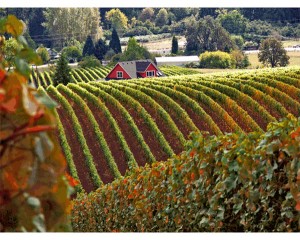
Willamette Valley Oregon
Oregon is a world-class wine state with 15 approved winegrowing regions and more than 300 wineries producing 72 varieties.
Oregon is blessed with some of the most diverse and beautiful wine-growing landscapes in the world. From the benchlands soaring above the Columbia River Gorge to the Willamette Valley’s green, rolling hills to the high mountain valleys of Southern Oregon, there are some incredible sights to behold—and some incredible wines to taste.
In Oregon, winemakers are farmers, families and environmental stewards who believe in high-quality artisan wine. Most Oregon wineries are relatively small, producing on average just 5,000 cases a year.
The Wine Region of the Finger Lakes
Coming Soon
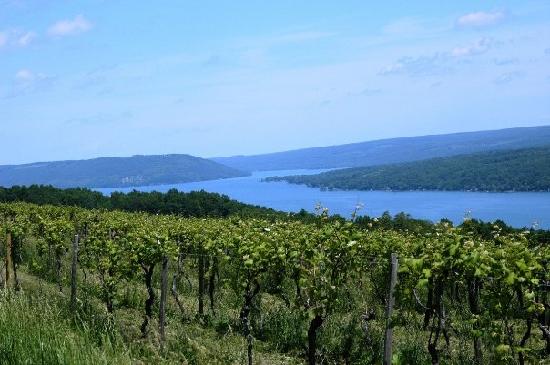
Finger Lakes Wine Region
Located in upstate New York, the Finger Lakes Wine Region is the largest winemaking region in the Eastern United States. Comprised of vineyards surrounded by the Canandaigua, Keuka, Seneca, and Cayuga lakes, the region has over 11,000 acres of vineyards, over 100 wineries, and dates back to 1829.
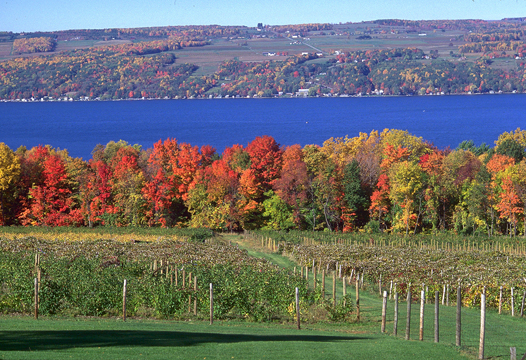
Finger Lakes Vineyard
Coming Soon
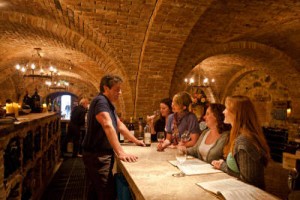
The Tasting Room
So you have visited a bunch of wineries, you have tasted some really great wines, and even a discovered a few gems, only to find out they are not available where you live.
You want to load up your suitcase but you just spent some hard earned money on some great wine and the last thing you want is a red or white soaked suitcase(with all your favorite clothes) trolling around the baggage carousel when you land.

Don't be this guy!
What to do? You could always ship some of the wines you just bought. It's much easier and hassle free for you. But let's face it, you LOVE these wines and they probably won't last too long in your "cellar."
There is a simple and easy way to make sure you always have an adequate supply of your favorite wines on hand!
Join your favorite winery's Wine Club!
Stay tuned and we will sort through what wineries offer the best value.
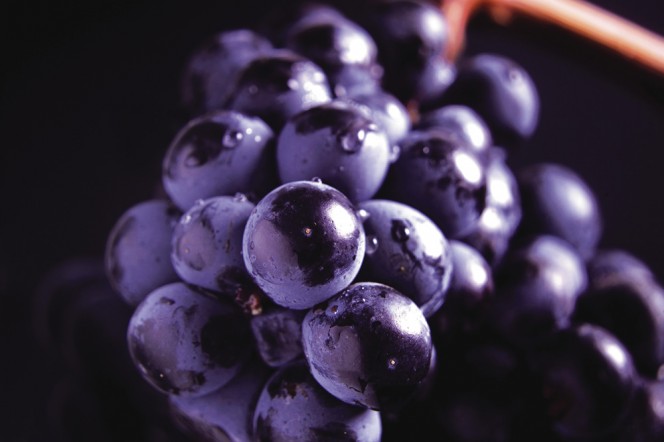
The Wine Region of Bordeaux France (Coming Soon)
Situated in the South-West of France, near the Atlantic Ocean coast, Bordeaux is one of the most well known and famous wine regions in the world.
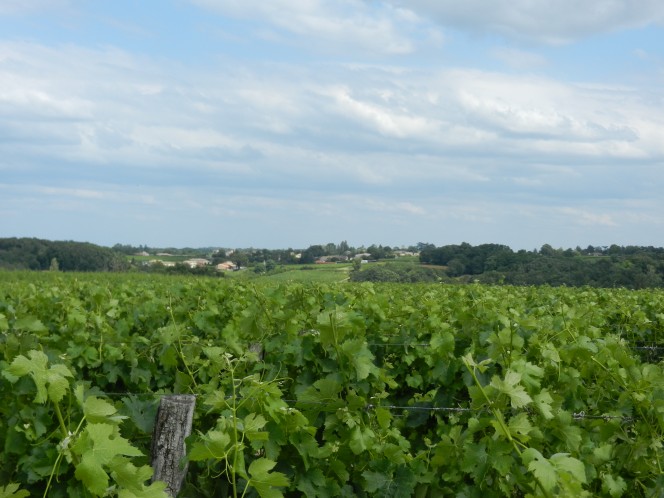
Vineyard in Bordeaux
Set amongst 300,000 acres near the city of Bordeaux, it is home to some of the most prestigious wineries(chateau's) in the world.
Bordeaux is a rather large area, with several smaller sub-regions, or appellations. Wine can be grown from many areas within the region but only those within specific areas can be named for their village. For example, one of the most famous villages within Bordeaux is Pauillac . Famous vineyards such as Mouton-Rothschild, Lafite-Rothschild, Latour and others are in this region.
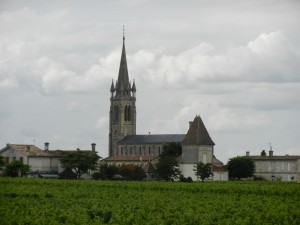
Most wineries in Bordeaux are named Château because the vineyards are found around large, old castles. So the names are Château Palmer, Château Latour, etc. Some smaller or newer producers are exceptions. Most of the more important wines are also known by the village or appellation they come from, such as Pauillac, St. Julien, Pomerol, etc.
Many of the most famous wines from the Bordeaux wine region are dry red wines. However, a good deal of dry white wine is also produced, particularly from Graves, one of the Bordeaux appellations. Sweet whites are also produced most notably in the appellations of Sauternes and Barsac.
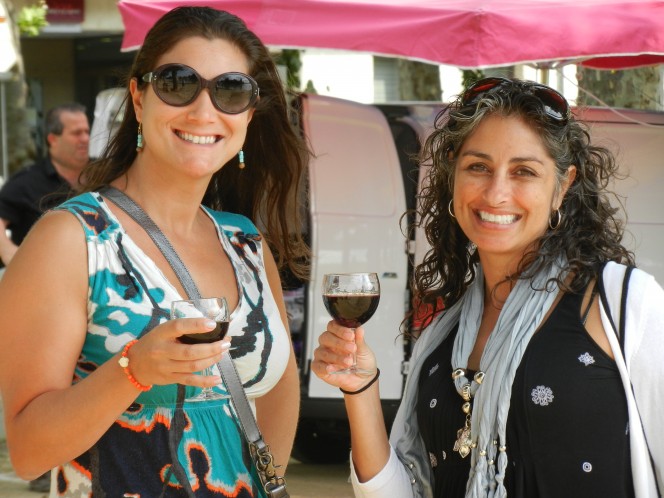
Wine Tasting in Bordeaux
For the famous red wines of Bordeaux, there are 5 principal grape varieties that are allowed to be used (although there are a couple other rarely used ones). These include Cabernet Sauvignon, Merlot, Cabernet Franc, Malbec and Petite Verdot. All of these are red grapes that tend to produce full-bodied wines although they all have unique characteristics. Cabernet Sauvignon is often described as more masculine than Merlot, with firmer structure and tannin. Its classic aromas and flavors are of dark berries, such as black currants, along with hints of tobacco, pencil lead shavings and other complexity. Merlot is similar but usually a bit rounder, softer. Most wines of Bordeaux are made of a blend of these grapes, although for most Cabernet Sauvignon and/or Merlot make up the majority. The wines of the left bank (see below) tend to have much more Cabernet while the right bank wines tend to have more Merlot.
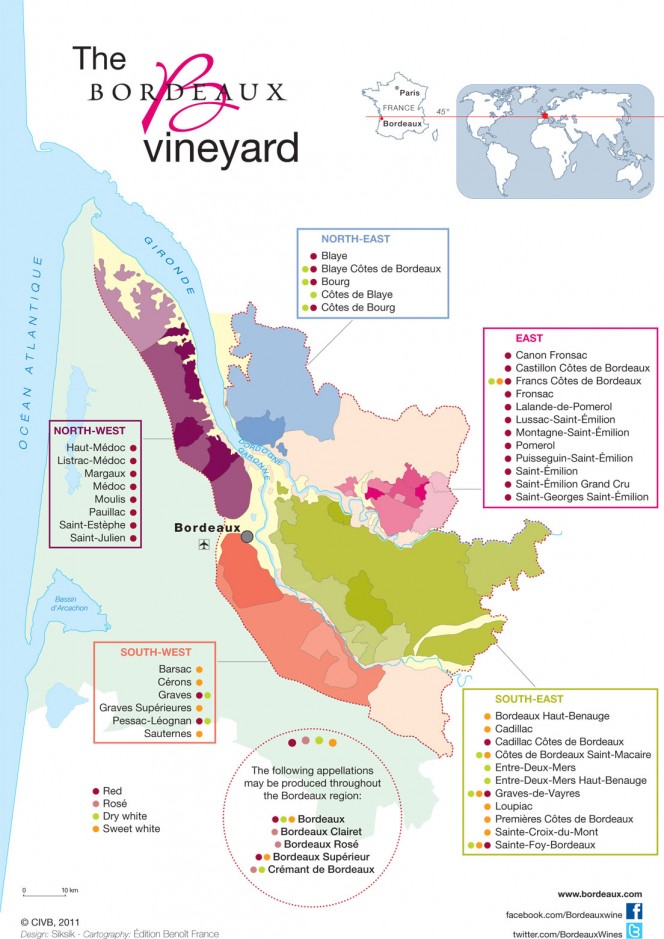
Wine Regions of Bordeaux
The wine region of Rioja, Spain. (Coming Soon)
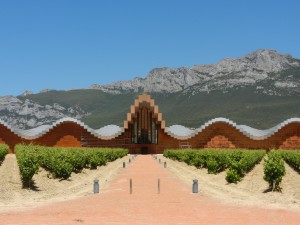
The Rioja wine region is located in northern Spain, on both sides of the River Ebro.
Rioja consists of 3 regions: Rioja Alta, Rioja Baja, and Rioja Alavesa.
In Rioja Alavesa there is a significant influence of the Atlantic climate and the soils are chalky-clay situated in terraces and small plots. In Rioja Alta the climate is also mainly Atlantic, while the soils are chalky-clay, ferrous-clay or alluvial. Rioja Baja has a drier, warmer climate, thanks to the Mediterranean influence.
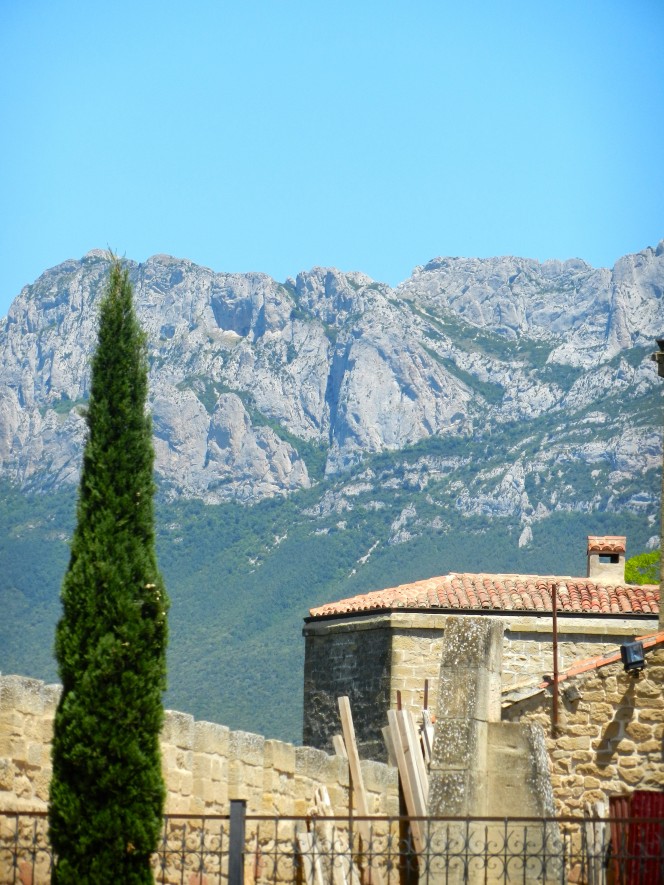
Wine Region of Rioja
Rioja is a privileged region for growing grapes and making top-quality wines, with a unique personality and an exceptional aptitude for ageing. The Rioja wine region is located in northern Spain, on both sides of the River Ebro. Rioja has 63,593 hectares of vineyards that are divided between three provinces, La Rioja (43,885 ha), Alava (12,934 ha) and Navarre (6,774 ha).
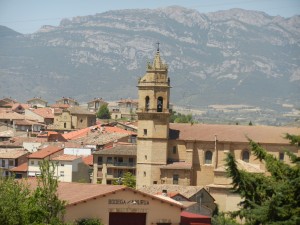
Elciego, home to Marquis Riscal Winery
One hundred kilometres separate Haro, the westernmost town, from Alfaro, the easternmost. The valley has a maximum width of about 40 kilometres, covered in vineyards which occupy successive terraces to an altitude of about 700 metres above sea level. The whole area benefits from the confluence of two distinctly opposed climates -Atlantic and Mediterranean- which provide mild temperatures and an annual rainfall of slightly above 400 l/m2 -ideal conditions for growing grapes.
The three areas all have distinct characteristics. In Rioja Alavesa there is a significant influence of the Atlantic climate and the soils are chalky-clay situated in terraces and small plots. In Rioja Alta the climate is also mainly Atlantic, while the soils are chalky-clay, ferrous-clay or alluvial. Rioja Baja has a drier, warmer climate, thanks to the Mediterranean influence and the soils are alluvial and ferrous-clay.
This, together with the use of different grape varieties and growing practices, allows local winemakers to make a wide range of wines with a different personality, although always within the framework of a perfectly-recognisable common identity.
The wine region's annual production currently stands at 280 to 300 million litres, of which 90% is red, the rest being white and rosé.
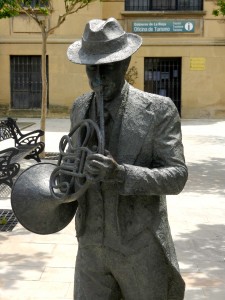
The experience of grape growers and wine makers has resulted in a selection of those grape varieties that best adapt to the region’s climate and soils, while producing wine of the highest quality. The primary goal behind this is to achieve greater competitiveness in white wines and to bring diversity to wine production while maintaining the wines’ identity and differentiation.
The grape varieties that are currently authorised by the Regulations of the D. O. Ca. Rioja are:

Considered native to Rioja, it is the wine region’s most typical grape. It is the origin of the identity of its wines and one of the great grape varieties in the world. It occupies more than 75% of the region’s vineyards and it is very versatile from an oenological viewpoint. It is capable of producing wines that can withstand long ageing periods, with a good balance of alcohol content, colour and acidity, and an honest, smooth, fruity mouthfeel that turns velvety as it ages.
Regarding its agronomic performance, it sets well but is highly sensitive to pests and disease and not very resistant to drought or high temperatures. Its name comes from the Spanish “temprano” meaning “early” and it does in fact ripen quite early. There are varying degrees of similarity with the various varieties that are purportedly the same as Tempranillo de Rioja. This ranges from almost complete similarity in the case of Cencibel, Tinto de Madrid, Tinto del País and Tinto Fino to more distant resemblances such as Tinto de Toro and Ull de Llebre. Tempranillo is currently widely planted across Spain because of its proven quality. It is an authorised grape variety in no less than 28 designations of origin, of which 12 consider it as their main variety or one of the preferred varieties.

This grape variety native to Spain is the most extensively grown variety in the world . In Rioja, it complements the Tempranillo with its aromas and body. With good extract and alcohol content, its wines vary depending on environmental conditions (temperature) and tending practices (production). In warm areas, it produces the kind of wine that has given it its reputation as a rugged grape but in cool areas it produces very interesting, well-balanced wines, particularly rosés. Prone to coulure, this is nonetheless a hardy plant, able to withstand periods of drought, and also fairly resistant to pests and major vine diseases such as rust mites and powdery mildew; hence its popularity among growers. Synonyms found in ampelographic collections around the world include: Abundante, Alicante, Cannonaddu, Cannonaddu Nieddu, Cannonao, Cannonau Selvaggio, Canonazo, Carignane Rosso, Garnaccho Negro, Garnatxa País, Gironet, Granaccia, Granaxa, Grenache Rouge, Lladoner, Retagliad Nieddu, Rivesaltes, Rousillon Tinto, Rousillon, Tinto Aragonés, Tinto Navalcarnero, Uva di Spagna.

Graciano is an indigenous grape variety and its cultivation is very limited in other areas. Shown to be an excellent complement to Tempranillo in the ageing process, this grape has a promising future in Rioja, where its planted surface area has increased significantly in the last few years, although it has yet to reach pre-phylloxera figures. It requires clay-limestone soils and a cool climate. It is fairly resistant to mildew and powdery mildew, with low fertility rates and late maturing. It offers wines with a marked acidity and polyphenolic content, ideal for ageing, with a unique aroma that is much more intense than those of other varieties in Rioja. Synonyms found in ampelographic collections around the world include: Bastardo Nero, Bordelais, Cagnolale, Cagnovali Negro, Cagnulari, Cagnulari Bastardo, Cagnulari Sardo, Caldaredou Caldarello, Cargo Muol, Couthurier, Graciano Tinto, Gros negrette, Minustello, Morrastel, Tinta do Padre Antonio, Tinta Miuda, Tintilla, Xerez, Zinzillosa.

There is evidence that this grape variety has been grown in Rioja for several centuries, but today it barely covers 3% of the wine region’s vineyards. It is more productive than other red varieties, albeit particularly sensitive to powdery mildew and needs more heat summation to mature. Although short on flavours, it produces wines with abundant tannins, high acidity and stable colour, all of which makes it a good complement to Tempranillo for wines to be aged for long periods. In the rest of the world it is mainly known as Carignan Noir, given its French origin. Other synonyms include: Babonenc, Bois Dur, Boue Duro, Cagnolaro Tinto, Carignan Mouillan, Carignano, Cariñena, Catalan, Cencibel, Crujillon, Crusillo, Girarde, Legno duro, Manuelo Tinto, Mataro, Mazuelo, Mollard, Monestel, Plant de Ledenon, Roussillonen, Samso, Samso Crusillo, Sopatna Blau, Tinto Mazuela, Uva di Spagna.
 MATURANA TINTA
MATURANA TINTAIt has small compact clusters and small berries. It is very sensitive to botrytis, with late budburst but early ripening. As for the wine parameters, it has high colour intensity and anthocyanin content, high acidity and medium alcohol content. Sensorially, it stands out for its purple colour, typical varietal aromas of green peppers with balsamic and spicy notes, a well-structured mouth with notable acidity and tartness and medium persistence. It is not grown anywhere else in the world, making it a very interesting grape to support the uniqueness, differentiation and diversity of Rioja wines.

The main white grape variety grown in Rioja, it is more productive than the red varieties and offers fruity wines with floral aromas and a remarkable acidity, making ideal for both young and aged whites. Oak-aged whites are traditional in Rioja, a practice that has been expanded in the last few years to include the fermentation of the must in barrels with its lees. Better known in Spain as Macabeo, the synonyms most frequently quoted are Alcañón, Forcalla, Gredelin, Lardot, , Macabeu, Queue de Renard and Rossan.

There are many Malvasias in the world, but they are not considered synonyms of Malvasía de Rioja, which has an outstanding potential for producing top quality whites. The clusters are a reddish yellow and produce a very interesting, unctuous, intensely aromatic wine. The only internationally accepted synonym is Sibirat Parent, but in Rioja other names are used which make reference to the reddish hue of the skin in ripe grapes, such as Rojal, Blanca Roja and Blanquirroja.

It is the variety that occupies the least surface area among authorised Rioja grapes. It may well come from a mutation of red Garnacha. It has very similar characteristics to the red Garnacha (alcoholic wines with significant extract but little aroma and acidity). Grown in cool areas, it produces pleasant wines with good acidity. Alicante Blanca, Garnacha, Grenache Blanc and Sillina Lanc are the synonyms found in ampelographic collections.
 TEMPRANILLO BLANCO
TEMPRANILLO BLANCOThis variety comes from a natural genetic mutation from a single cane of a red Tempranillo vine , located in 1988 in an old vineyard in Murillo del Río Leza (La Rioja). The clusters are loose and medium-sized and the berries are also medium-sized and slightly flattened. Despite late budding, veraison and ripening come quite early. The total acidity remains high, with marked malic acid content. Its wines have a high concentration of volatile compounds with fruity aromas. Its wines offer excellent sensorial characteristics, just like the red Tempranillo. They are yellow-green with characteristic intense aromas of bananas and citrus and tropical fruit, underscored by floral and terpene notes. Well-balanced mouthfeel with structure and medium-long persistence. It is not found anywhere else in the world.
 MATURANA BLANCA
MATURANA BLANCAIt is the oldest grape variety known in Rioja, mentioned as early as 1622. It is quite a fertile variety with small clusters and small, elliptical berries. It has also proved to be precocious in all phases of development. It has the disadvantage of being particularly sensitive to botrytis. The most notable characteristics of Maturana Blanca are its low pH and high acidity, with significant tartaric acid content and low potassium content. These aspects compensate for the high alcohol content that can be reached with this variety. Sensorial assessment results are positive. Maturana Blanca wines have been described as greenish-yellow, with fruity aromas of apples, bananas and citrus fruits, and herbal notes. Light yet balanced on the palate, with tangy sensations and a slightly bitter finish of medium persistence.
 TURRUNTÉS DE RIOJA
TURRUNTÉS DE RIOJAThe name Turruntés often leads to confusion with the Galician variety Torrontés and it has nothing to do with the grape variety grown in Argentina. According to DNA tests, the only similar variety would be the Albillo Mayor found in Castile-Leon. The cluster is medium-sized and compact, with medium-sized, spherical berries. Those with greater sun exposure may acquire a golden colour with dark spots. It features early budding and ripening. Low alcohol content and high acidity, with a low pH and significant concentration of tartaric acid with low potassium content. The wine is described as pale yellow with greenish hues, having fruity aromas with dominating notes of apples, with a vegetal, grassy nature. Light on the palate, acidy and slightly bitter, with medium-short persistence.
 CHARDONNAY
CHARDONNAYIt is the world's most popular variety, equivalent to Cabernet for red wines, the most widely-grown grape for quality white wines across the world. Originally from Burgundy, it is also known as Morillon blanc, Beaunois and Weisser, although Chardonnay is by far the most international version. The vine is not very productive, with small- to medium-sized clusters, which produce yellow wines with green hues of outstanding finesse and aromatic intensity. Significant dry extract and low oxidation levels make this an ideal variety for barrel ageing.
 SAUVIGNON BLANC
SAUVIGNON BLANCIt is part of the international cast of quality white wine grapes, considered the finest variety among French white grapes after Chardonnay. It has very small clusters; compact and winged, with a very short peduncle. It has small, spheroid berries with skins of medium consistency and a greenish-yellow colour. Its pulp is quite consistent and intensely aromatic. The leaves are small, orbicular and bulky. The underside of the blade is fluffy and forms balls. It produces elegant, dry, acidy wines.

A grape native to the D.O. Rueda, it is the Spanish white variety that has undergone the greatest development. It has small clusters, with a visible peduncle and medium-small, short, elliptical berries, with a thick, green-yellow skin and a greenish pulp. The leaves are orbicular and a somewhat shiny dark green. The aromas and flavours of the Verdejo wine has nuances of herbal scrubs, with fruity hints slightly sweetened by a powerful alcohol content offset by an excellent acidity. The extract is perceptible from its volume and its characteristic bitter touch, which projects a flash of originality in the mouth, accompanied by great fruit expression.
A Members Only Featured Deal from the Vines of Mendoza!
The Vines of Mendoza is offering an exclusive deal ONLY for World of Wine Guide members.
Click here to receive a 15% discount from the Vines of Mendoza!
When visiting Mendoza, no visit will be complete without spending some time in The Vines of Mendoza. From tastings, to pairings, to wine flights, to blending and bottling your own wines, the Vines of Mendoza is a truly unique wine experience in Mendoza!
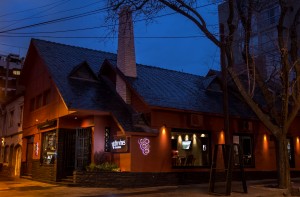
Vines of Mendoza Tasting Room
Click here for The Vines of Mendoza Insiders Guide.
What started as a long weekend of wine tasting in December 2004 for co-founder Michael Evans along with a chance meeting of co-founder Pablo Gimenez Riili, resulted in the creation of The Vines of Mendoza in the Spring of 2005.
Fast forward to today, and the Vines has just opened it's new and improved Tasting Room, to go along with it's highly successful Vines Wine Bar and Vinoteca located in the Park Hyatt Hotel. The Vines of Mendoza offers on site sales as well as online sales, a great wine club, and they also offer private vineyard estates on their property in Uco Valley.
And no visit would be complete without a visit to the Vines Of Mendoza Resort and Spa. Opening in early 2013, the Vines Resort and Spa, set amid the base of the Andes Mountains within the Vines 700 acres of vineyards, will offer you the opportunity to explore the surrounding area by horseback, spend the day among the vineyards, create, bottle and label your own wines, or just simply relax and spend the day being pampered at the Spa.
You could, and should, opt to spend a day learning sensory tasting and blending wine at The Vines of Mendoza's winery in the Uco Valley with The Vines' Wine Director Mariana Onofri. In their state-of-the-art winery you can learn all about creating the perfect wine with Mariana there the best way possible -- through tasting and analysis. The Vines has put together a state of the art winery and under the tutelage of acclaimed winemaker Santiago Achaval, you will have the opportunity to to craft your wine as you like.
The Vines of Mendoza is a truly unique experience from start to finish and a must for any visit to Mendoza!
Fabulous restaurants, beautiful parks, amazing scenery , and great wine are just a few of the reasons you should visit Mendoza. Accommodations range from high end luxury hotels to quaint Bed and Breakfasts. A vibrant city center with dozens of outdoor cafes buzzes with locals and tourists alike. Mendoza is an outdoor city. With so much to do, Mendoza has something for everyone.
Click here to see full version of Bienvenidos a Mendoza.
The wine regions of Mendoza lie mostly south of the city. Maipu, Godoy Cruz, and Lujan de Cuyo are all just 20 minutes from the center of Mendoza. Further away, you will find the regions of Agrelo and Perdriel and eventually the Uco Valley. Small boutique, medium sized, and large production winery’s can all be found just 20 minutes from the city center. Mendoza's strategic location at the base of the Andes Mountains, which offer hot and dry days and cool nights, make Mendoza an ideal wine region.
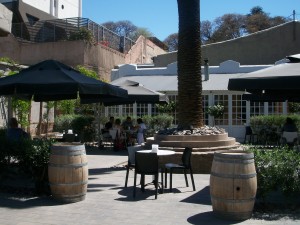
Courtyard at El Gran Bar 23
Any visit to Mendoza should begin at Vines of Mendoza. . Offering tastings, wine flights, and information, Vines of Mendoza is your one stop spot for all the information you will need to begin your journey. A very knowledgeable and friendly staff will help you plan a few great days of wine tastings and tours and guide you to some of the best restaurants in town. (Click above for Vines of Mendoza feature)

Click here for the Vines of Mendoza Insiders Guide
Mendoza has wineries of all types and all sizes. Old school to Modern. Like a great wine, getting the right blend of all them is key!
Here are some tips to help you navigate Mendoza: Click here to watch "Tour Mendoza" video
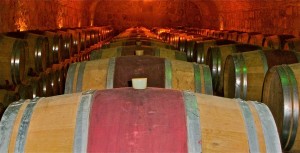
Reservations are a must! Many wineries schedule their tours a few times a day. Walk-up’s may not be accommodated. Limited personnel are available for the general public. If you want to really see a winery and go behind the scenes, schedule a visit and do it right!
Because many vineyards are so close to the city, you can do it by yourself. But the way to go in Mendoza is to hire a guide/driver for your tours. Many smaller and boutique wineries lie off main roads and an experienced guide/driver will know exactly how to get there.
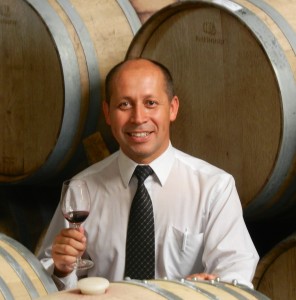
Luis Flores
We highly recommend contacting Luis Flores(benoluis@hotmail.com). Luis is an extremely knowledgeable and well respected guide/driver in Mendoza. He is friends with many of the winery workers and can often secure appointments when not available.
Before heading out for the day, all your tours and appointments will already be arranged.
If you have an idea of some of the wineries you would like to visit, be sure to let your guide/driver know at least a day in advance so that a reservation can be made.
Your day will consist of three or four winery visits and usually a sit down lunch at one one of the many wineries with award winning chef’s right on property. With a guide/driver, you can enjoy all the benefits of your tour without any drawbacks(driving, finding the winery’s, staying on schedule).
Some must see’s while in Mendoza:
Clos De Chacras is a small sized boutique winery located in the Lujan de Cuyo region of Mendoza that dates back to 1921.
It's small size and emphasis on quality are very evident in all aspects of the winery. It has managed to keep the charm of it's history and blend that with the newest technology in wine making. A tour of the winery shows all the working areas and what seems like an endless cellar with all of the winery's production. A small restaurant with an outstanding menu and wine pairing completes any visit to Clos De Chacras. Quite simply, it is perfect!
Established in 1998 by a group of friends from Argentina and Italy, Achaval-Ferrer is based on two solid principles: the search for quality and the respect for the terroir. By adhering to these principles, amazing things happen every day at Achaval-Ferrer!
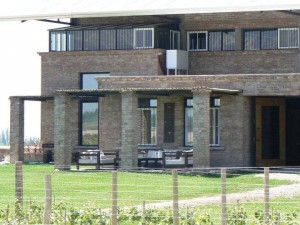
Bodega Achaval-Ferrer
The estates are located in the province of Mendoza between 700 and 1100 meters above sea level. This region offers privileged soil conditions, weather and irrigation, optimal for growing Malbec. Wide temperature changes (warm days and cool nights), desert-like climate, poor soil composition and irrigation waters from the pristine snowmelt off the Andes encourage the maturation process of grapes which converts into wines with character, profound structure and complexity.
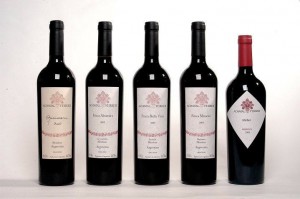
Achaval Ferrer Collection

Carmelo Patti
World of Wine Guide Featured Interview:
Carmelo Patti- Old School Winemaker and Mendoza Legend
Carmelo Patti is a legend! He is an "old school" winemaker with a passion and craft unparalleled anywhere. A visit to Carmelo will leave you laughing(even if you don't speak Spanish) as he takes you around and shows you how he does it. He is "hands on" in every aspect. From planting to bottling to labeling, he oversees everything and perfection is his goal. And his wines show that every year.
Bodega Lagarde World of Wine Guide Featured Winery
Founded in 1897, Lagarde has a long and rich tradition in Mendoza. The winery preserves it's old traditions and architecture and they are evident throughout. Attention to detail at every step along the way along with generations of passion for winemaking , the Pescarmona Family has positioned Lagarde as a premier winery, not only in Mendoza, but around the world.
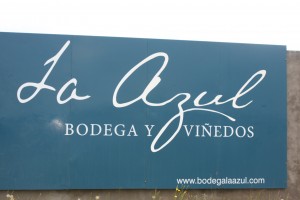
At the base of the Andes, in the middle of Tupungato ,established in 2003, lies Bodega La Azul.
Relatively small, compared to some of it's neighbors, La Azul is one of those hidden gems! It has its own vineyards with more than fifty years of production.
La Azul is just a little winery that merges into the sky. Warm, simple, and very inviting, you can find a great landscape and some premium wines. With the Andes as backdrop, La Azul has a great restaurant and very relaxing grounds where you can just spend hours taking in all the spectacular scenery.
Bodega La Azul blends modern technology along with traditional methods to produce outstanding wines!
Cava De Cano A truly unique experience await you at Cava De Cano! The restaurant has several different dining rooms ranging from small and intimate to large and cozy to suit any size group.
As you enter your "cave" , a delicious spread of fresh and local ingredients is laid out before you. You fully expect there to be several more people joining you, but no, this is your room and this is just the appetizer!
An extensive wine list as well as excellent house wines are all available as you continue to feast on grilled meats, vegetables, and pasta's. Take a break and walk the grounds or just relax in the courtyard and have dessert. Cava de Cano is a memorable experience!
World of Wine Guide recommends the following tour operators:
They can arrange day trips to wineries of your choice, suggest itineraries, plan overnight stays, book horseback riding and kayak tours, and allow you to just enjoy what all of what Mendoza has to offer!
Trout and Wine(www.troutandwine.com)
Mendoza Holidays(www.mendozaholidays.com)
After a full day of Wine Tours and Tastings, Mendoza offers a vast array of excellent restaurants.
Some must see restaurants World of Wine Guide recommends:
Azafran(www.bve.com.ar) There is no wine list here. Instead, the sommelier will take you into the window front cellar and work with you and find the perfect match for your dinner!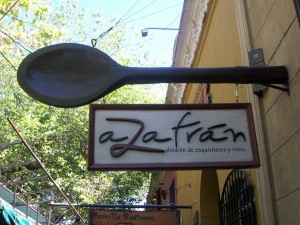
The menu is fresh and features many local specialties. It’s decor is like a Gourmet General Market. Reservations a must!
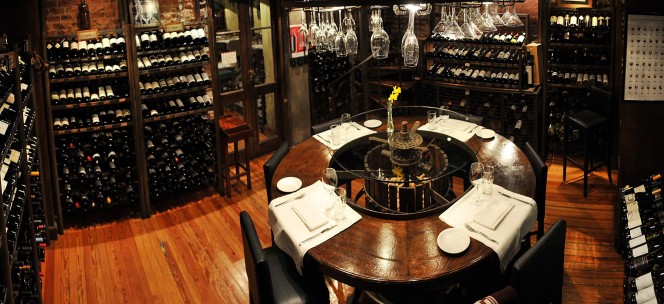
Florentino cafe-bistro
(www.facebook.com/pages/Florentino-Cafe-Bistro/148176005230104?sk=app_2373072738)---- Charming renovated house turned bistro-cafe serving excellent local flare across from Plaza Italia. Menu changes often but is always fresh and innovative.
Reservations recommended.
Ceibo Restaurante (www.ceiborestaurante.com.ar) Country style cuisine in the city! Ceibo features a full array of grilled specialties and desserts. They also have a great selection of wines. Reservations recommended.
Francis Mellman 1884 ( www.1884restaurante.com.ar/ ) Celebrity Chef Francis Mellman’s 1884 is a Mendoza landmark in itself. Patagonian specialties include goat empanadas you can enjoy on a festive patio or an elegantly cozy dining room. Locals and tourists alike flock to 1884. An extensive wine list compliments every dish.
Reservations a must!
With so much to do in Mendoza, you’ll hardly have time to hit the myriad of shops throughout town. Every corner has another specialty store but Wine is king in Mendoza and there are several very good ones.
Winery and Co. (www.winery.com.ar) and El 23 Gran Bar are a Wine Shop, Restaurant, Cafe, Bar, Store, and great hang out all in one.
Shop an extensive wine list. Have a bottle of wine on the patio, order lunch, and just relax.

Vineyard near Los Árboles in Uco Valley, Mendoza, Argentina, in front of the Andes Mountains. (Photo credit: Wikipedia)
Privacy Policy | Terms of Use
All content copyright © World of Wine Guide - Web Hosting, Design and Marketing by InMotion